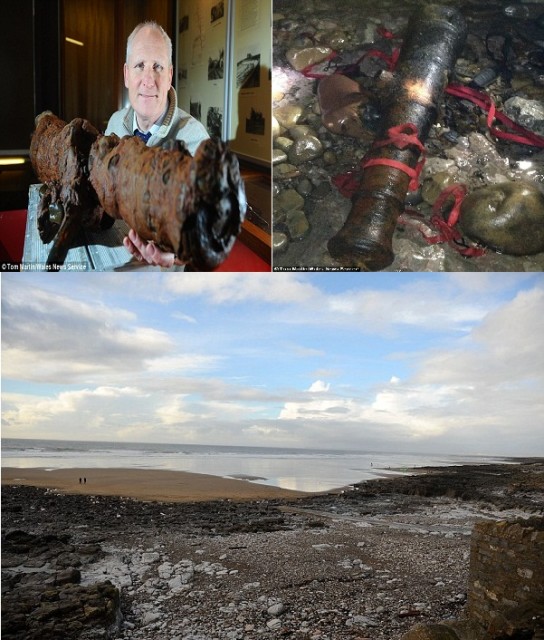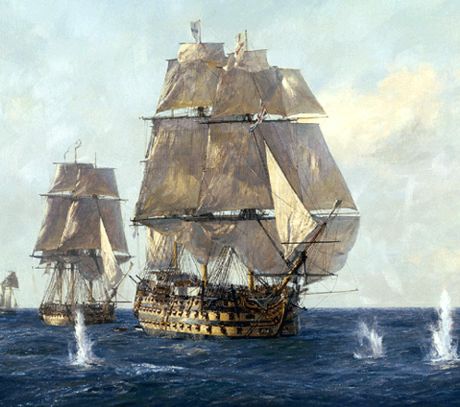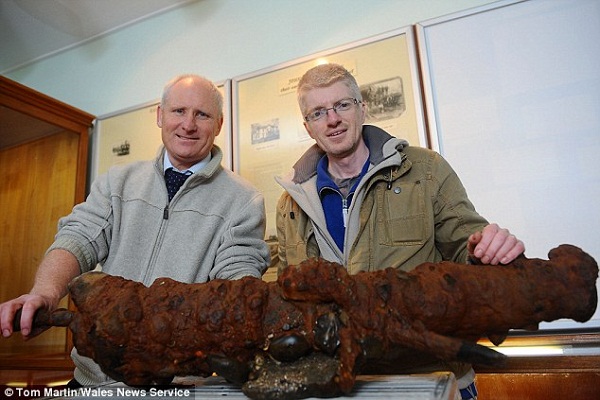
South Wales – Recent storms have laid bare 2 cannons hidden under the sand of a South Wales beach from a sunken British warship sent to quell Irish rebellion some 200 years ago.
According to a report run by the British online publication Daily Mail, the two heavy iron guns were from a Navy troop ship which sank down when wrecked by a storm and had laid hidden under the sand of the popular seaside resort of Porthcawl, South Wales. The discovery has been a first for these old cannons since Napoleon Bonaparte’s era.
Recent storms that hit the area had removed about two feet of sand revealing the find underneath. Two dog walkers were the ones who spotted the tip of one of the cannons in the said beach and when marine historians were called in to look over the discovery, they believed the cannons were from a ship that was sent to subdue a brewing Irish insurgency.
“It’s an amazing find and but for the exceptional storms could have lain hidden there for another two centuries,” said Porthcawl Museum’s chairman Paul Joseph.
He then recounted how they loaded the smaller cannon, about three feet long, into a wheelbarrow to transport it to the local museum located at the town’s center but had to employ 12 local lifeguards to lift the bigger four-and-a-half feet long cannon and how they had to put it in a trailer hauled by a quad bike for transport.
Mr. Joseph also believes that the two cannons might have come from a British ship on the way to Ireland with troops on board in 1798 but was sunk due to a severe storm at the Bristol Channel.

It can be remembered how the British government sent thousands of troops to Ireland to extinguish a major revolution against them in the land led by the Society of United Irishmen in 1798. The French had sent military aid tot he rebels it never came through as Atlantic storms compelled them to retreat.
meanwhile, the two 200-year-old cannons are being stored in saltwater followed by rainwater for a few weeks before they get treated with special chemicals for preservation.
“The guns will be given pride of place in the museum and I’m sure will be a big attraction for visitors,” Mr. Joseph added.

The two cannons are not the only finds the recent storms that bashed Welsh coastline brought to light; they actually have laid bare a treasury of discoveries.
This trove includes remains of a 10,000-year-old forest at Newgale, Pembrokeshire as well as a 1918 bathhouse at Aberystwyth.
As Phil Bennett, heritage manager of the Pembrokeshire Coast National Park, points out about the recent woodland discovery in the area:
“The storms and high seas have scoured the sand exposing the remains of this woodland. We have been able to identify some recognizable timbers from the Mesolithic period about 11,600 years ago.”
